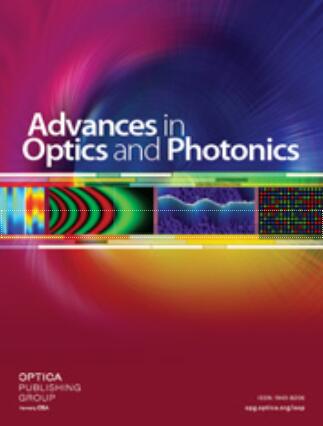Perspective on light-induced transport of particles: from optical forces to phoretic motion
IF 23.8
1区 物理与天体物理
Q1 OPTICS
引用次数: 60
Abstract
Propulsive effects of light, which often remain unnoticed in our daily-life experience, manifest themselves on spatial scales ranging from subatomic to astronomical. Light-mediated forces can indeed confine individual atoms, cooling their effective temperature very close to absolute zero, as well as contribute to cosmological phenomena such as the formation of stellar planetary systems. In this review, we focus on the transport processes that light can initiate on small spatial scales. In particular, we discuss in depth various light-induced mechanisms for the controlled transport of microscopic particles; these mechanisms rely on the direct transfer of momentum between the particles and the incident light waves, on the combination of optical forces with external forces of other nature, and on light-triggered phoretic motion. After a concise theoretical overview of the physical origins of optical forces, we describe how these forces can be harnessed to guide particles either in continuous bulk media or in the proximity of a constraining interface under various configurations of the illuminating light beams (radiative, evanescent, or plasmonic fields). Subsequently, we introduce particle transport techniques that complement optical forces with counteracting forces of non-optical nature. We finally discuss particle actuation schemes where light acts as a fine knob to trigger and/or modulate phoretic motion in spatial gradients of non-optical (e.g., electric, chemical, or temperature) fields. We conclude by outlining possible future fundamental and applied directions for research in light-induced particle transport. We believe that this comprehensive review can inspire diverse, interdisciplinary scientific communities to devise novel, unorthodox ways of assembling and manipulating materials with light.光致粒子输运的观点:从光力到膜运动
光的推进效应在我们的日常生活中经常被忽视,但在从亚原子到天文的空间尺度上都表现出来。光介导的力确实可以限制单个原子,使它们的有效温度非常接近绝对零度,并有助于形成恒星行星系统等宇宙学现象。在这篇综述中,我们关注光在小空间尺度上启动的传输过程。特别地,我们深入讨论了微观粒子受控输运的各种光诱导机制;这些机制依赖于粒子和入射光波之间动量的直接传递,依赖于光力与其他性质的外力的结合,以及依赖于光触发的光子运动。在对光力的物理起源进行了简明的理论概述之后,我们描述了如何利用这些力来引导粒子,无论是在连续的大块介质中,还是在各种照明光束(辐射场、倏逝场或等离子场)的约束界面附近。随后,我们介绍了与非光学性质的反作用力互补的粒子输运技术。我们最后讨论了粒子驱动方案,其中光作为一个精细的旋钮来触发和/或调制非光学(例如,电,化学或温度)场的空间梯度中的电泳运动。最后,展望了光致粒子输运研究的基础和应用方向。我们相信,这一全面的综述可以激发不同的、跨学科的科学界设计出新颖的、非正统的用光组装和操纵材料的方法。
本文章由计算机程序翻译,如有差异,请以英文原文为准。
求助全文
约1分钟内获得全文
求助全文
来源期刊

Advances in Optics and Photonics
OPTICS-
CiteScore
56.60
自引率
0.00%
发文量
13
期刊介绍:
Advances in Optics and Photonics (AOP) is an all-electronic journal that publishes comprehensive review articles and multimedia tutorials. It is suitable for students, researchers, faculty, business professionals, and engineers interested in optics and photonics. The content of the journal covers advancements in these fields, ranging from fundamental science to engineering applications.
The journal aims to capture the most significant developments in optics and photonics. It achieves this through long review articles and comprehensive tutorials written by prominent and respected authors who are at the forefront of their fields.
The journal goes beyond traditional text-based articles by enhancing the content with multimedia elements, such as animation and video. This multimedia approach helps to enhance the understanding and visualization of complex concepts.
AOP offers dedicated article preparation and peer-review support to assist authors throughout the publication process. This support ensures that the articles meet the journal's standards and are well-received by readers.
Additionally, AOP welcomes comments on published review articles, encouraging further discussions and insights from the scientific community.
In summary, Advances in Optics and Photonics is a comprehensive journal that provides authoritative and accessible content on advancements in optics and photonics. With its diverse range of articles, multimedia enhancements, and dedicated support, AOP serves as a valuable resource for professionals and researchers in these fields.
 求助内容:
求助内容: 应助结果提醒方式:
应助结果提醒方式:


